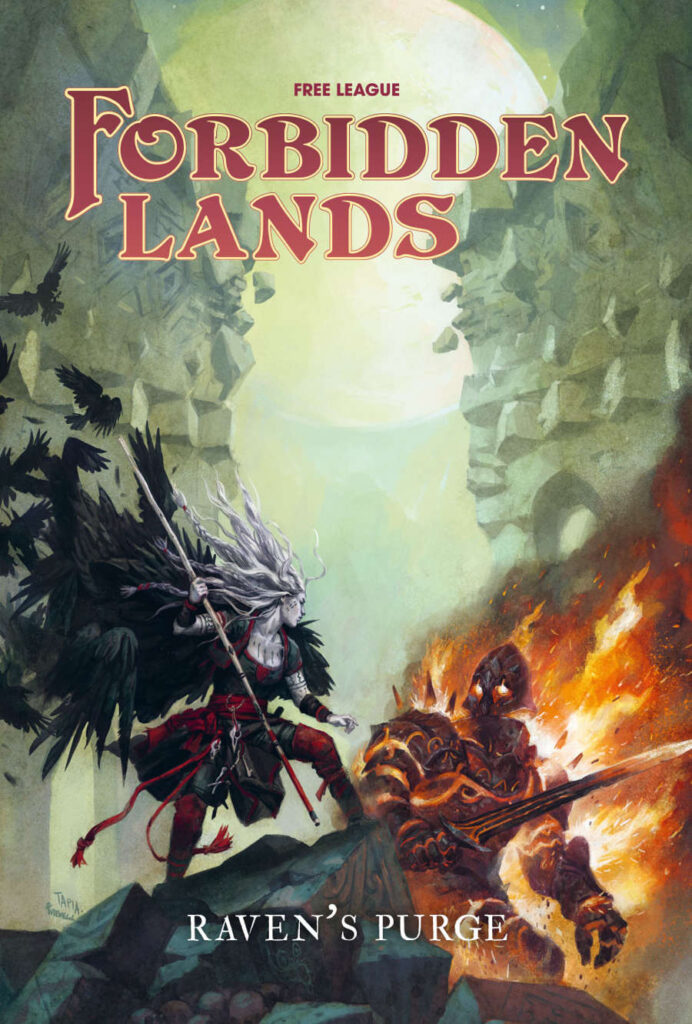In my A Game Per Year project, my goal has been to read one roleplaying game corebook for every year they’ve been published. However, I soon started to feel that it was hard to decipher how the games were really meant to be played. For this reason, I decided to start a parallel project, An Adventure Per Year, to read one roleplaying adventure for each year they’ve been published.

Forbidden Lands is a roleplaying game published by Fria ligan combining exploration, base building and mythic fantasy with OSR-style deadliness. The campaign Raven’s Purge feels like an integral part of the game and was often referred to in the books included in the core boxed set.
Raven’s Purge is designed as a sandbox campaign providing reasons for player characters to travel around the titular Forbidden Lands of the game, visiting adventure sites, discovering legends and meeting supporting characters. It’s organized around the search for various magical items which are extremely helpful to deal with the principal villains.
The basic scenario design unit in Forbidden Lands is the adventure site, akin to the dungeon of other roleplaying games but with a broader understanding of how the characters can approach the situation. For adventure sites, there are combat, stealth and social angles, entirely dependent on what the characters are trying to do. The campaign provides situations and the players decide what to do with them.
The adventure sites remind me of encounter locations in the Fallout series of videogames. There’s a place you discover, with enemies, supporting characters and possible events but it’s up to you how that will play out in the game from moment to moment.
The villains in Raven’s Purge are delightfully grotesque, starting from the hybrid creature Zytera, combining the bodies of an ancient wizard, his daughter and a giant spider. There’s a demon which consists of a biological mass from which various human body parts protrude. Similar to the vibe you sometimes get in Warhammer Fantasy Roleplay, the world feels lived in, with people reacting in different ways to the terrors and temptations around them.
Because the design is so open-ended, just providing resources for the GM to use in running the campaign, the ending is also necessarily up in the air. The book provides the scenery and the characters but by that point its obvious the players will have made their own alliances, found their own motivations and perhaps suffered their own setbacks to such a degree that its possible only to offer suggestions for wildly varying things that might happen to end it all.